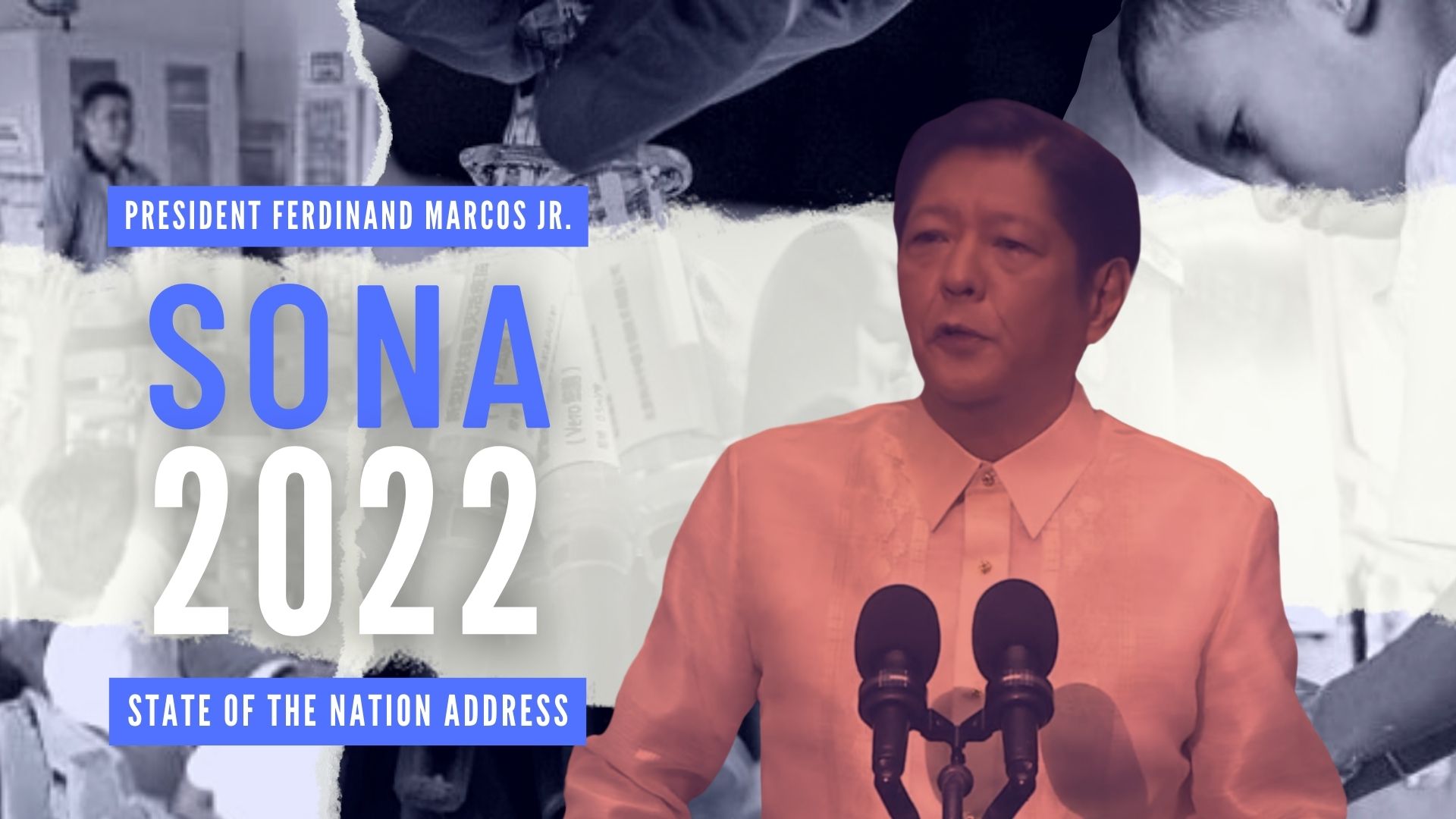
IN HIS first State of the Nation Address, President Ferdinand Marcos Jr. vowed to revive the education system by fully reopening the schools and addressing technology-related issues.
Marcos Jr. said the education department is already preparing to implement in-person classes “with the utmost consideration for the safety of students,” given the continuing threat of COVID-19.
He also promised to improve internet connection quality and digitalize certain processes.
Although he admitted that digitalizing the processes would create “inequalities” among Filipinos, he would still push for it as he deemed it “vital” for citizens not to be left behind.
However, these plans brewed different outlooks from Thomasian students and faculty.
Educational equity vs. health and safety
Raphael Dungca, a fourth-year elementary education student, favored full-blown face-to-face classes, claiming he did not experience a “proper learning environment” at home.
“This will benefit a lot of students since there are some that do not have a proper learning environment inside their homes. Also, the teachers can focus directly on the learning problems of the students and can guide them in person,” Dungca said.
Similar to Dungca, UST Department of Political Science Asst. Prof. Froilan Calilung said there is an urgency for the implementation of in-person classes as “students cannot afford the deterioration of learning.”
He also emphasized that since the country’s current education set-up is “lagging behind our neighboring countries in reopening schools,” people should learn to retrofit and be flexible with their approaches.
Citing the pre-pandemic studies, which revealed the low-ranking educational system of the Philippines in comparison to other ASEAN nations, Calilung said that the pandemic may have induced its quality to “further deterioration.”
Unlike Calilung and Dungca, fourth-year history major John Velasquez considered hybrid learning more sustainable, given the current transportation crisis.
Anthea Canasa, a fourth-year political science major, echoed Velasquez’s sentiments, saying that ensuring students’ health safety is not enough and that there are other factors to consider, such as mass public transportation.
Besides the “readiness” of public transportation, Canasa also emphasized the consideration of the learning institution’s measures against the virus’ emerging variants and health insurance.
Digital divide amid education crisis
Aside from considering the full implementation of in-person classes, Marcos Jr. also saw the need for children to have good internet access to “fully participate in the digital community.”
However, the 2021 survey from Social Weather Stations revealed that about 89% of the 1,500 surveyed families said blended learning is difficult for them. A separate SWS survey in that year also showed that 86% of them allot ₱901 for internet services monthly.
While admitting that the current education system is experiencing difficulties acquiring the necessary digital equipment, Marcos Jr. planned to launch the “BroadBand ng Masa” project to improve the nation’s internet connectivity.
The country’s average internet connection speed in 2022, according to web service Ookla, is 46.25 Mbps. The country also ranked 82nd out of 85 countries in terms of internet affordability based on the United Nations’ 2020 Digital Quality of Life Index.
“I have therefore tasked Secretary Ivan Uy to deploy digital connectivity across our various islands. This will be done by implementing the National Broadband Plan, the common tower program, connecting our geographically isolated and disadvantaged areas via our ‘BroadBand ng Masa’ project,” Marcos Jr. said.
Marcos Jr. also said that “All relevant modes of digital transport should be utilized. These may be through a combination of terrestrial or submarine fiber optics, wireless and even satellite technology.”
But Dungca said that Marcos Jr.’s program seemed “just a mere idea” that lacked concreteness.
“[Marcos Jr.] must come up with a concrete plan on how to execute such idea because it is very unfair if this plan of his will only be beneficial to a certain population,” Dungca said.
Third-year journalism student Via Bianca Ramones said the BroadBand ng Masa program would only be successful if “it is successfully implemented and widely accessible to all Filipino students and professors.”
But considering the country’s growing debt, Ramones said offering universal connectivity might achieve the opposite results.
“It is very obvious that our country does not have enough funds even to cater to other programs. It can be seen in the debts we have. Not everyone has access to the internet, which will only cause inequality and division among social classes,” Ramones explained.
Meanwhile, political science instructor Jazztin Jairum Manalo is convinced that the “BroadBand ng Masa” is a ”good starting point,” especially in the academe, as it establishes a wide-reaching network for communication and research.
“What we need to look into, should it be passed, is how or if they will be maintaining this aid if the pandemic ends,” Manalo said.
Reviving ROTC
Among the 19-point policies Marcos Jr. presented is the legislation that would make Reserve Officers’ Training Corps (ROTC) mandatory for senior high school levels in all public and private tertiary institutions.
READ: Marcos urges Congress to make ROTC mandatory
The legislative measure would disallow college students to choose freely among ROTC, Literacy Training Service, and Civil Welfare Training Service for their National Service Training Program.
The Pulse Asia Survey showed that 69 percent of senior high school students support the reimposition of ROTC despite reports of physical and psychological abuse among its cadets.
But for Alexandria Munar, a political science senior and batch 2020 ROTC cadet, students should be given the freedom to choose whether or not they will undergo the ROTC program.
Opposing the claims of some lawmakers that ROTC will demonstrate nationalism and discipline, Munar said there are other avenues to achieve these objectives.
“By acknowledging the fact that the youth has their own individuality permits the civil society to be liberating as it should be,” Munar said.
Mandating ROTC also “diminishes their opportunity to explore the potential in the academic field—which is the prime purpose of the K-12 program,” she added.
Similarly, Aris Galang, a journalism major and ROTC batch 2020 cadet, has reservations about its revival, citing the past controversies, abuses, and lapses in the implementation of ROTC.
In March 2001, Mark Welson Chua, a UST mechanical engineering student and former cadet officer, was found dead in the Pasig River after exposing the ROTC program’s corruption.
Chua’s murder led to several staged student activists demonstrations and eventually the abolition of mandatory ROTC.
“If it becomes inevitable that ROTC will become mandatory, I think that the people, senators, and lawmakers should keep a close eye on it so that what happened before won’t happen again, such as the hazing, bullying, and power tripping,” Galang said. F



